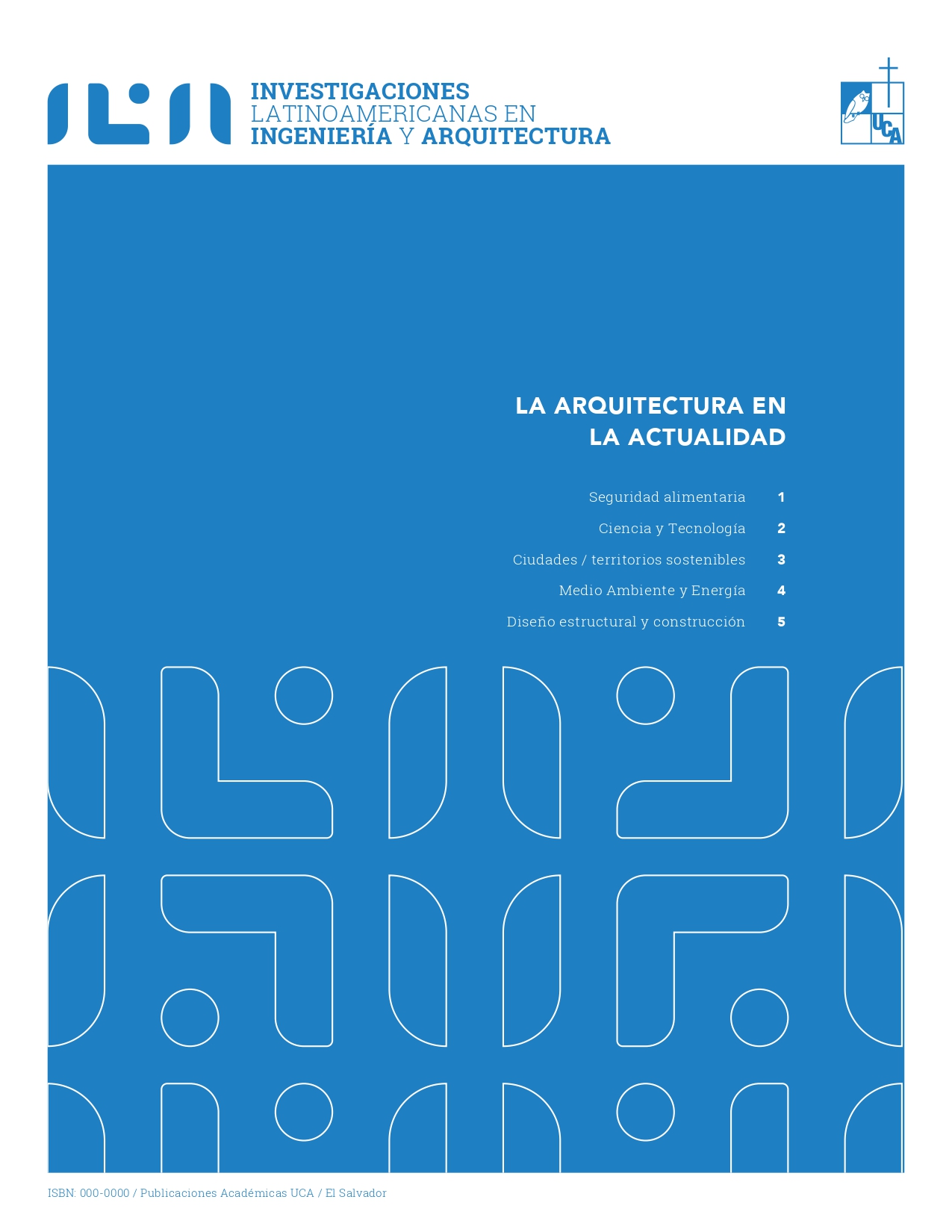Abstract
One of the main challenges assessing masonry structures is numerical simulation. An overview and classification of the current developments and available techniques for nonlinear analysis of confined masonry structures is presented. As an exploratory study, an application of a numerical model using a Discrete Macro Element Method was carried out. It consisted on the calibration of mechanical parameters for representing the capacity curve and damage progression of a confined masonry wall tested under quasi static cyclic load. Then a sensitivity analysis was carried out. It has been found that global behavior is well captured by the model regarding strength and deformation. However, failure mode at confining elements was not consistent with the observed damage. Calibration has been made only for one experimental test; thus, conclusions are only valid for this set of experimental results. It is considered that the Discrete Macro Element Method is suitable not only to reproduce the global behavior of complete buildings, which is its original purpose, but also it may be used to study element behavior with appropriate modifications.
ILIA: Investigaciones Latinoamericanas en Ingeniería y Arquitectura, No. 01, 2024: 108-114.
References
Normas técnicas complementarias para diseño y construcción de estructuras de mampostería con comentarios, Mexico, 2020.
Norma E.070 Albañilería, Perú, 2006.
INN (2003): Norma Chilena NCh2123.Of97 – Modificada en 2003. Albañilería Confinada, Disposiciones para el diseño y cálculo, Segunda Edición, Instituto de Normalización, Santiago, Chile.
G. Magenes, G.M. Calvi, IN-PLANE SEISMIC RESPONSE OF BRICK MASONRY WALLS, John Wiley & Sons, 1996.
S. Brzev, EARTHQUAKE-RESISTANT CONFINED MASONRY CONSTRUCTION, National Information Center of Earthquake Engineering, Indian Institute of Technology Kanpur, 2007.
R. Marques, J.M. Pereira, P.B. Lourenço, Lateral in-plane seismic response of confined masonry walls: From numerical to backbone models, Eng Struct. 221 (2020). https://doi.org/10.1016/j.engstruct.2020.111098.
P.B. Lourenço, CURRENT EXPERIMENTAL AND NUMERICAL ISSUES IN MASONRY RESEARCH, 2004.
J. v. Lemos, Discrete element modeling of masonry structures, International Journal of Architectural Heritage. 1 (2007) 190–213. https://doi.org/10.1080/15583050601176868.
S. Casolo, F. Peña, Rigid element model for in-plane dynamics of masonry walls considering hysteretic behaviour and damage, Earthq Eng Struct Dyn. 36 (2007) 1029–1048. https://doi.org/10.1002/eqe.670.
S. Casolo, Modelling in-plane micro-structure of masonry walls by rigid elements, Int J Solids Struct. 41 (2004) 3625–3641. https://doi.org/10.1016/j.ijsolstr.2004.02.002.
Peter. Linde, Institut für Baustatik und Konstruktion ETH Zürich., Numerical modelling and capacity design of earthquake-resistant reinforced concrete walls, Birkhäuser, 1993.
B. Pantò, F. Cannizzaro, S. Caddemi, I. Caliò, 3D macro-element modelling approach for seismic assessment of historical masonry churches, Advances in Engineering Software. 97 (2016) 40–59. https://doi.org/10.1016/j.advengsoft.2016.02.009.
Vadalà F, S.C. Luis, F. Marco Francesco, L.B. Paulo, Seismic assessment of unreinforced masonry structures: a coupled mesoscale-DMEM approach, n.d.
Bazán E., Meli R., Diseño Sismico de Edificaciones, n.d.
J.E. José Pérez Gavilán, Guía para el Análisis de Estructuras de Mampostería, n.d.
Brzev S., Pérez-Gavilán J., Application of Strut-and-Tie Model for Seismic design of confined masonry shear walls, in: Brick and Block Masonry, CRC Press, 2016: pp. 2257–2263. https://doi.org/10.1201/b21889-296.
A. Terán-Gilmore, O. Zuñiga-Cuevas, J. Ruiz-García, Displacementbased seismic assessment of low-height confined masonry buildings, Earthquake Spectra. 25 (2009) 439–464. https://doi.org/10.1193/1.3111149.
R. Marques, P.B. Lourenço, A model for pushover analysis of confined masonry structures: Implementation and validation, Bulletin of Earthquake Engineering. 11 (2013) 2133–2150. https://doi.org/10.1007/s10518-013-9497-5.
G.S. Torrisi, F.J. Crisafulli, An innovative Model for the In-Plane Nonlinear Analysis of Confined Masonry and Infilled Frame Structures A.Pavese, n.d. http://www.confinedmasonry.org/.
B. Borah, H.B. Kaushik, V. Singhal, Development of a Novel V-D Strut Model for Seismic Analysis of Confined Masonry Buildings, Journal of Structural Engineering. 147 (2021). https://doi.org/10.1061/(asce)st.1943-541x.0002941.
N. Rankawat, S. Brzev, S.K. Jain, J.J. Pérez Gavilán, Nonlinear seismic evaluation of confined masonry structures using equivalent truss model, Eng Struct. 248 (2021). https://doi.org/10.1016/j.engstruct.2021.113114.
I. Caliò, M. Marletta, B. Pantò, A new discrete element model for the evaluation of the seismic behaviour of unreinforced masonry
buildings, Eng Struct. 40 (2012) 327–338. https://doi.org/10.1016/j.engstruct.2012.02.039.
B. Pantò, F. Cannizzaro, S. Caddemi, I. Caliò, 3D macro-element modelling approach for seismic assessment of historical masonry churches, Advances in Engineering Software. 97 (2016) 40–59. https://doi.org/10.1016/j.advengsoft.2016.02.009.
P. Patricia Méndez De Hasbun, J. Adolfo, and R. Huezo, “PROYECTO DE COOPERACIÓN TÉCNICA Informe de resultados de la investigación del sistema estructural MAMPOSTERÍA SUELO CEMENTO CONFINADA-FASE II ‘Mejoramiento de la Tecnología para la Construcción y Sistema de Difusión de la Vivienda Social Sismo-Resistente.’”
F. Nucera, A. Santini, E. Tripodi, and I. Caliò, “Seismic vulnerability assessment of confined masonry buildings by macro-element modeling: a case study.”
F. Nucera, A. Santini, E. Tripodi, F. Cannizzaro, and B. Pantò, “Influence of geometrical and mechanical parameters on the seismic vulnerability assessment of confined masonry buildings by macroelement modeling.”

This work is licensed under a Creative Commons Attribution-NonCommercial 4.0 International License.
Copyright (c) 2024 S. A. Sunley (Autor/a)





